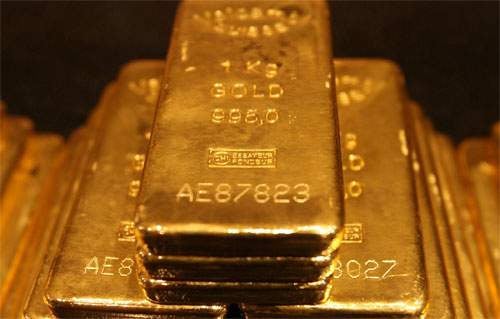
As Texas decides to ‘repatriate’ its gold from New York, it becomes one of many jurisdictions bringing home their reserves of the metal, writes Olenka Hamilton
The Lone Star state isn’t exactly known for taking the conventional route: so when Texas announces plans to ‘repatriate’ $861 million worth of gold from a bank vault in Manhattan, it’s easy to wonder if they’re up to something.
Your suspicions will no doubt then be confirmed when you hear that this will all be housed in the first-state administered bullion depository to be opened in Austin in December 2018. Once up and running, the depository will serve as an alternative stash for gold and other precious metals in place of federally regulated banks or smaller unregulated storage facilities. The hope is for it to then expand into a larger commodities exchange, which would aim to challenge the existing commodities markets places in Chicago and New York, according to reports.
So why is Texas taking such an interest in its gold reserve? Republican state Representative Giovanni Caprigilione, who drafted the bill to create the depository in 2015, said he was motivated by the 2008 financial crisis. He is calling for the state’s ‘independence and sovereignty’ from Wall Street banks and the Federal Reserve.
The Texans aren’t alone: earlier this year, Berlin announced it had concluded the colossal repatriation of 674 tonnes of gold from New York and Paris – worth some $150 billion – three years ahead of schedule. The cautious Germans want their gold where they can see it in case the euro crashes, in the event of which they can turn to their gold reserves to buy dollars or even to resuscitate the old deutsche mark (though this is now less commonly discussed than before). The Dutch and Austrians have also repatriated gold as part of emergency plans in the event of the euro failing.
Ross Norman, CEO of St James’s gold trader Sharps Pixley, certainly thinks the Texans are on to something. It’s not paranoia, he says, but plain good sense. ‘They think people should be able to protect themselves with a form of money that is a long term store of value,’ Norman ventures. ‘Take the GBP in my lifetime which has fallen by over 97 per cent in terms of what it buys you – it is a rubbish store of value but a good medium of exchange – whereas gold holds value in the long run. It seems these states are looking to break the monopoly that cash or the US dollar has for wealth protection.’
And in the US, a least six other US states are already at it. Tennessee, Idaho, Utah, Arizona and Virginia are all making noises about bringing their gold reserves back from the US Federal Reserve and holding it locally. Tied in with all these moves is the reinstatement of gold and silver as legal tender as well as the removal of taxes on bullion, thus challenging Federal Reserve’s monopoly on currency, Norman asserts. Kansas for example is currently putting forward a bill that would remove taxes from the sale of gold, silver, numismatic coins, palladium, platinum, gold or silver bullion, and currency in order to ‘incentivise investors who want to protect their wealth from currency devaluation by investing in gold and silver bullion’. ‘This would make it easier for Kansans to shelter themselves from the effects of quantitative easing and other central bank policies that steadily erode the value the dollar,’ according to a Tenth Amendment Center, a libertarian US constitutional educational group.
So the Texans’ gold move is part of a rising global trend – not just a US one, and is surely being driven by uncertainties and a subsequent lack of faith in the global financial system. Quantitative easing and increased money supply have also raised the prospect of higher levels of inflation across the globe. Don’t forget that inflation has reached a four year high in the UK just last month.
As ever the often-gloomy proponents of gold insist that it’s ultimately the only reliable store of wealth we have. ‘Gold has always been money and is the most reliable store of wealth,’ says Jason Cozens, CEO of Glint. ‘Around the world we are seeing people increasingly think outside of the monetary system and look for an alternative to national currencies.’
Are they right? A tangible asset it may be, but gold has lost almost a third of its value since its post-crisis peak in 2011 at over $1,800 per ounce. Now it’s trading at $1,213 per ounce. Coupled with the impact inflation will have had over that time, it hardly therefore seems impervious to global fluctuations.
And yet its appeal is clear. Gold has been desirable since the dawn of mankind; it’s a simple, solid, good old-fashioned precious metal, which in a post-financial crisis age, is arguably the perfect antidote to cryptocurrencies such as Bitcoin or the array of bewilderingly complex financial instruments out there that all seemingly offer precisely what everyone is after. The United States famously left gold back in 1971. Forty-six years later, the Texans are heading back.
Olenka Hamiton is staff writer at Spear’s
Related
The mystery of the German gold rush






